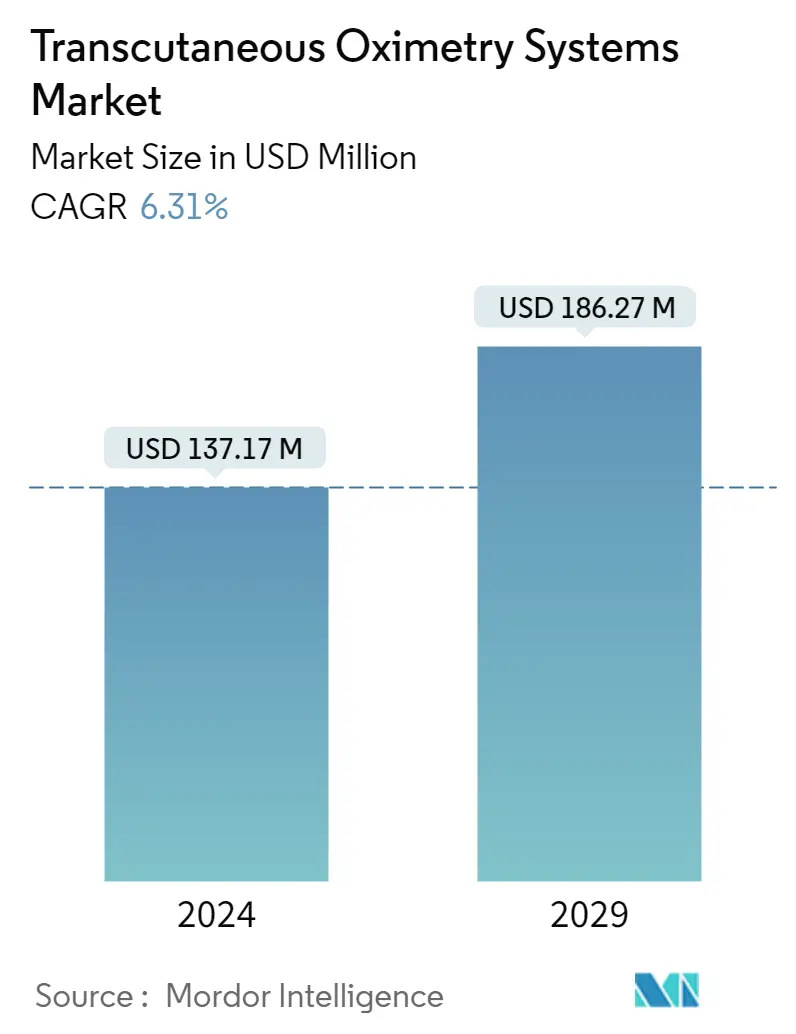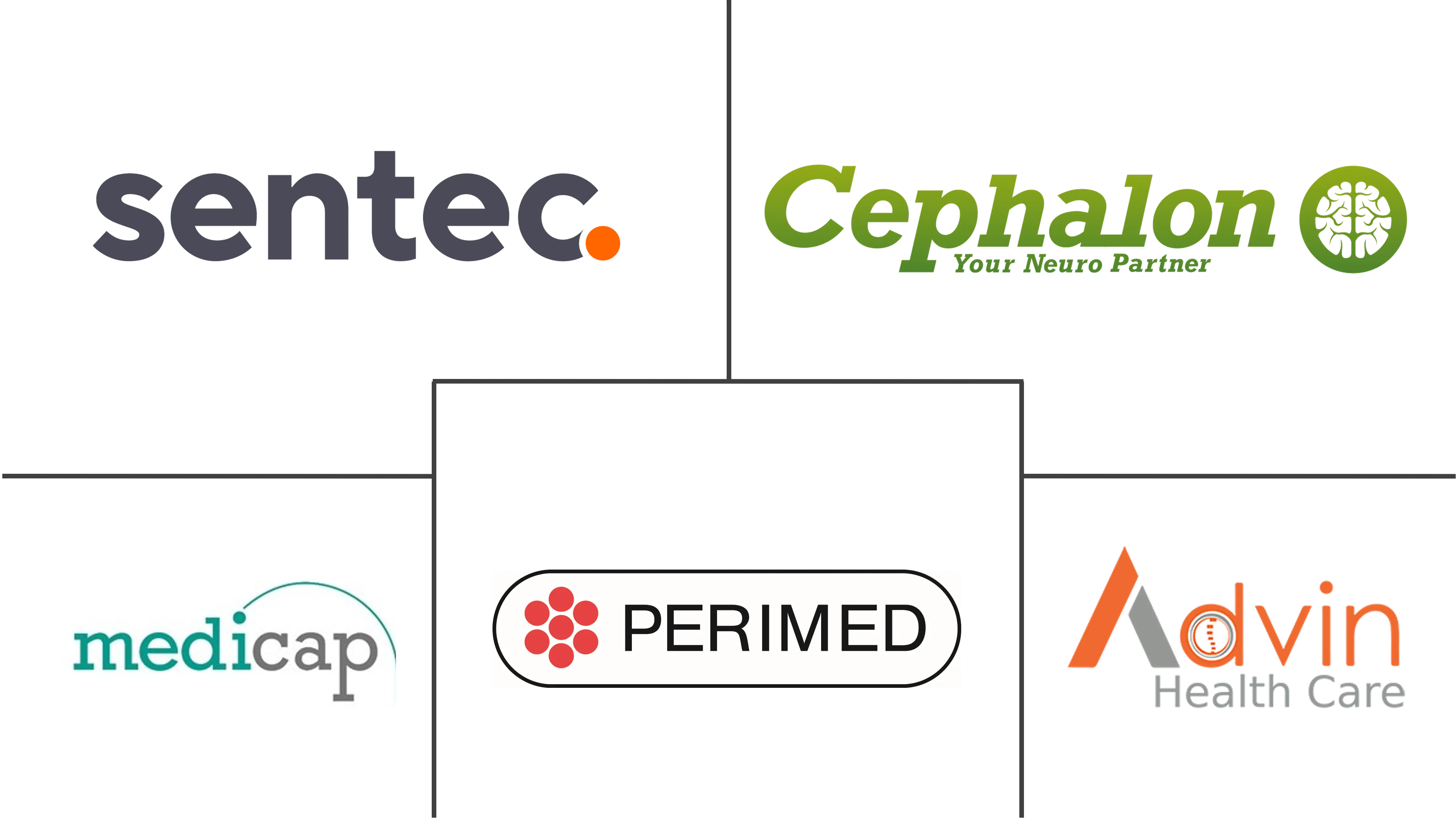Market Size of Transcutaneous Oximetry Systems Industry

| Study Period | 2019 - 2029 |
| Market Size (2024) | USD 137.17 Million |
| Market Size (2029) | USD 186.27 Million |
| CAGR (2024 - 2029) | 6.31 % |
| Fastest Growing Market | Asia Pacific |
| Largest Market | North America |
Major Players
*Disclaimer: Major Players sorted in no particular order |
Need a report that reflects how COVID-19 has impacted this market and its growth?
Transcutaneous Oximetry Systems Market Analysis
The Transcutaneous Oximetry Systems Market size is estimated at USD 137.17 million in 2024, and is expected to reach USD 186.27 million by 2029, growing at a CAGR of 6.31% during the forecast period (2024-2029).
The COVID-19 pandemic significantly impacted the transcutaneous oximetry systems due to the rapidly decreasing levels of oxygen in COVID-19-infected patients, which lead to requiring continuous monitoring. For instance, as per the article published in June 2021 in BMC journal, during the pandemic, transcutaneous pulse oximetry was conducted on hospital-admitted patients to understand the oxygen levels in the COVID-19-infected patients. Hence, the COVID-19 pandemic had a favorable impact on the market initially, currently as the pandemic has subsided the market has lost some traction and is expected to have stable growth during the forecast period of the study due to the rise of peripheral vascular diseases and an increase in diabetic cases.
The transcutaneous oximetry systems market is expected to account for significant growth owing to the increasing prevalence of peripheral vascular disorders and wound healing disorders. Typical and frequent wound-healing disorders are circulatory deficiency, malnutrition, metabolic disorders, sepsis, and additional inflammation. According to the Global Hunger Index, as of May 2022, 1.5 million children under the age of five, 45% of Somalia's children were projected to face acute malnutrition through the end of the year, including 386,400 who were expected to be severely malnourished. Thus, an increase in malnutrition leads to a slowdown of wound healing which thereby decrease the blood oxygen level at the site of injury. In such instances, for measuring oxygen levels, transcutaneous oximetry systems are widely used and thereby driving the market growth over the forecast period.
Moreover, the rise in the utilization of transcutaneous oximetry systems in peripheral vascular disorders to detect the systems is expected to fuel market growth. For instance, as per the article published in November 2022 in PubMed, the study showed that in patients with suspected thoracic outlet syndrome (TOS), transcutaneous oximetry (TcpO2) can be used for detecting upper limb arterial compression and/or symptoms during arm abduction. Transcutaneous oximetry systems are also gaining popularity to check the need for amputation. A diabetic foot ulcer is a major reason for foot amputation. An article published by National Center for Biotechnology Information in August 2022 stated that diabetic foot ulcers are among the most prevalent complications of people with diabetes mellitus and can be brought on by inadequate glycemic control, underlying neuropathy, peripheral vascular disease, or improper foot care. About 60% of diabetics develop neuropathy, eventually leading to a foot ulcer. The annual incidence of diabetic foot ulcers worldwide is between 9.1 to 26.1 million. Around 15 to 25% of patients with diabetes mellitus are likely to develop a diabetic foot ulcer during their lifetime. With the rising prevalence of newly diagnosed diabetes, the incidence of diabetic foot ulcers is also bound to increase. Also, the growing adoption of advanced monitoring systems for blood flow monitoring is expected to favor the demand for transcutaneous oximetry systems.
Thus, the rise in peripheral vascular disorders, diabetic mellitus, and the increase in the adoption of transcutaneous oximetry systems for detecting the oxygen levels in various diseases are expected to drive the market growth. However, the high cost of transcutaneous oximetry systems is expected to restrain market growth.
